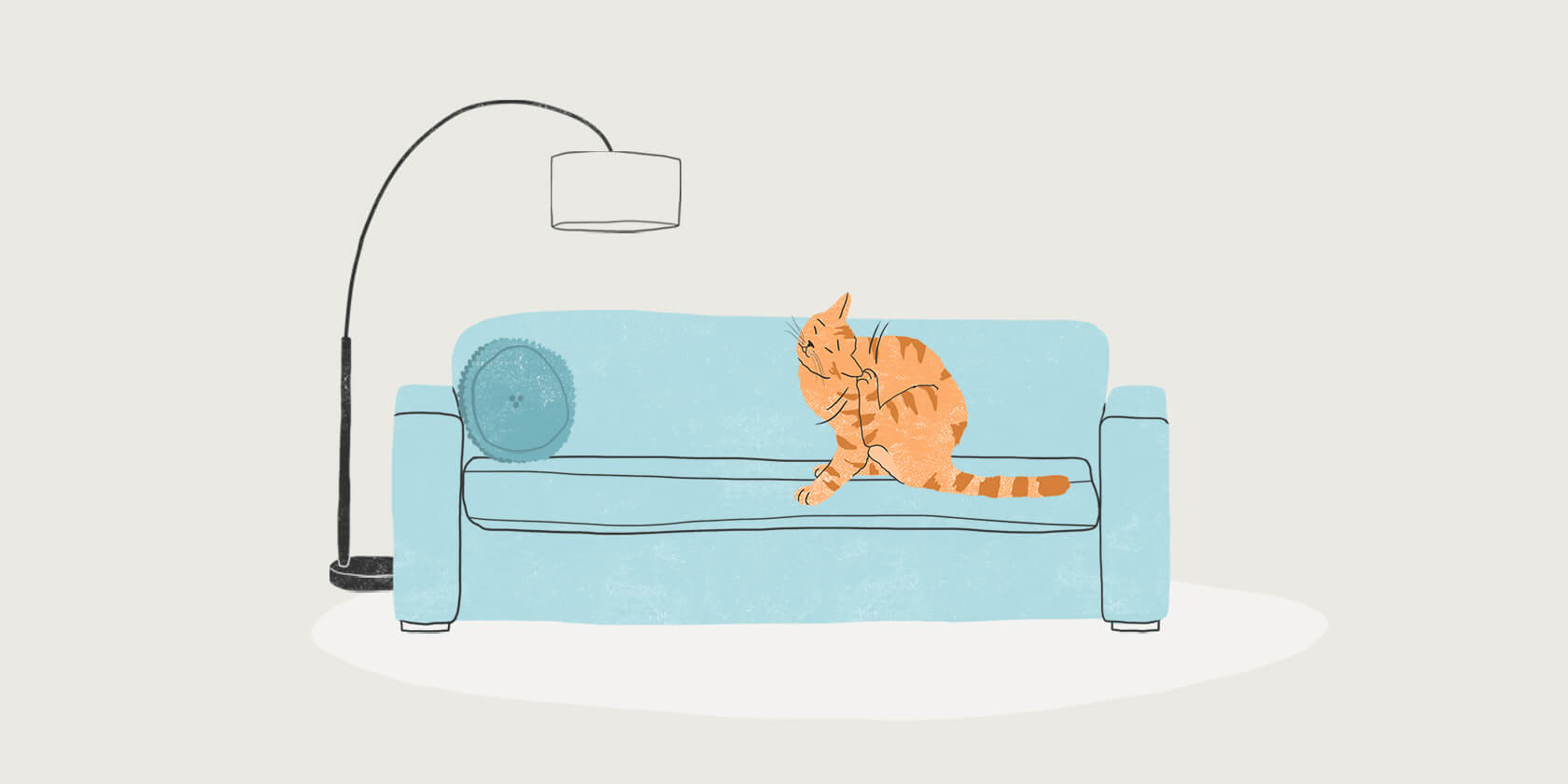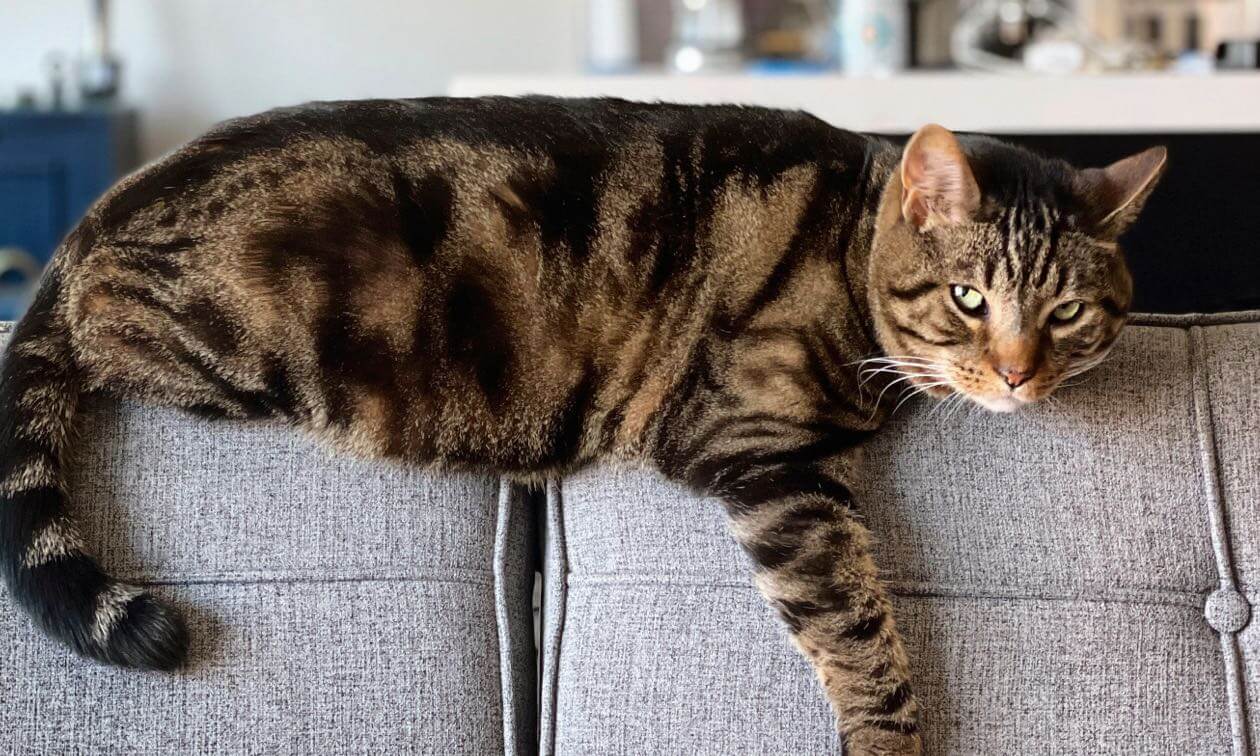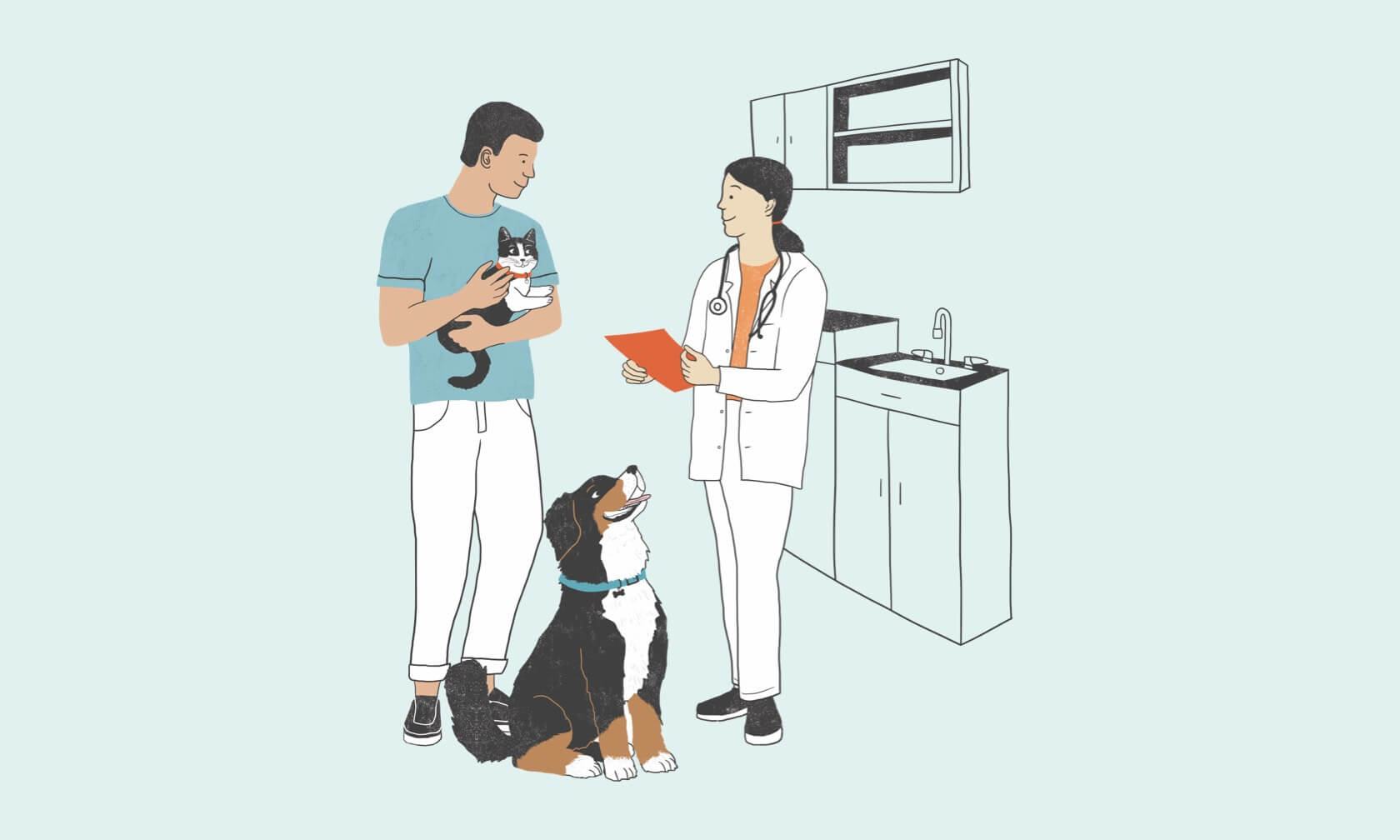Most people are familiar with dandruff, but did you know that cats can have dandruff too? Dandruff is not just the same as dry skin — it’s important to understand the difference and what dandruff can mean for your cat.
What is Cat Dandruff?
Cat dandruff is the white flakes on your cat’s coat (they’re clumps of dead skin cells). Cat dandruff can be caused by different things and is not part of the natural shedding process of their skin. This buildup of dried, dead skin cells doesn’t just stay on your cat’s coat. It can be shed into the surrounding environment, either remaining suspended in the air for long periods, attaching to surfaces in your home, or sticking to your clothing.
What Causes Cat Dandruff?
The cause of your cat’s dandruff can range from simple to very serious. Since some causes require medical treatment, it’s important to have your cat evaluated by your veterinarian, especially if you notice any of these signs in addition to dandruff.
- Itching
- Loss of fur
- Increased frequency of grooming
- Redness or other changes to the skin
- Vomiting
- Changes in appetite or water consumption
- Lethargy
- Changes in behavior

Causes of cat dandruff can include:
- Obesity
When cats are overweight, it limits their ability to properly groom themselves. In this case, the main location of the dandruff tends to be at the base of the tail or around the lower back, where obese cats likely can’t reach. - Arthritis
Just as obesity can make grooming difficult, so can pain and mobility issues associated with arthritis. - Undercoat Buildup
Your cat’s skin can become dry and scaly when matted fur blocks airflow. This prevents oxygen and moisture from getting to the skin. - Allergies
Seasonal, contact, food, and flea allergies commonly cause skin issues for cats, including inflammation and dandruff. - Dehydration
Like people, cats get dry skin when they’re not well hydrated. Dehydration can also be more of an issue in dry climates or in cats with some types of medical conditions.
Serious causes of cat dandruff may include:
- Fleas and Ticks
Both fleas and ticks can cause inflammation to the skin leading to itching and dandruff. Some cats are also allergic to flea bites. - Demodectic Mange
Some types of Demodex mites can be present in the skin of normal, healthy cats, but can cause an issue when the cat's immune system is weakened, allowing the mite population to overgrow. This can cause itching and inflammation, and, often, a secondary skin infection occurs. This combination of issues causes dandruff. There are also types of Demodex mites that are highly contagious and can cause your cat to become very itchy. - Skin Infections
Both bacterial and fungal infections of the skin can cause dandruff.
Very serious causes of cat dandruff include:
- Malnutrition
A lack of certain vitamins, minerals, or fats can cause the skin to dry out and flake. - Cancer
Some cancers, such as cutaneous lymphoma, impact a cat’s skin condition. - Metabolic Disorders
Diabetes mellitus, kidney disease, and thyroid disease, for example, can cause dry skin.
How to Prevent and Treat Cat Dandruff
While dandruff may seem like a small problem, it’s important to address it. If the cause is serious, early diagnosis means faster treatment. Here are a few ways your veterinarian may suggest treating your cat’s dandruff based on the cause.
- Obesity
Getting your cat down to their ideal body weight has many other benefits in addition to helping correct their dandruff. Speak to your veterinarian to determine your cat’s ideal weight, daily caloric intake, and tips for feeding and exercising your cat. - Arthritis
A healthy body weight is also important to ease your cat’s pain and discomfort from arthritis. Talk to your veterinarian on ways to manage your cats OA pain because they can recommend an appropriate such supplement or other arthritis management options for your cat. A more comfortable cat is more likely to self-groom, minimizing dandruff. - Undercoat Buildup
Regular grooming with a brush or comb that helps remove the undercoat also helps prevent buildup. If you’re not able to groom your cat at home, a professional groomer may be helpful. - Allergies
If you notice your cat’s dandruff is worse during spring and summer, or fall, possibly combined with watery eyes and sneezing, they may have seasonal allergies. Allergy testing and medications may offer some dandruff relief.
Contact allergies are sensitivities to things like laundry soap, shampoos, and fabrics. Try to only use hypoallergenic and fragrance-free products on and around your cat.
If you also notice gastrointestinal issues, the cause of dandruff could be food allergies. Speak to your veterinarian about food allergy testing and dietary changes.
- Dehydration
You can lead a cat to water, but you can’t make them drink. Some ways to increase your cat’s water intake include switching to or adding canned, wet food to their diet, using a water fountain instead of a bowl, and adding flavoring to their water. - Fleas and Ticks
Regularly inspect your cat’s skin and use flea and tick prevention year-round to help protect your cat from these pests. Fleas and ticks can sneak inside on your shoes or on other pets, so it's important to use parasite protection all year long, even on cats that stay indoors. - Demodectic Mange
While this condition is rare in cats, it can occur. Because it affects the hair follicles, you’ll often see scaly patches on your cat’s bare skin and should consult your veterinarian. Keeping your cat’s immune system strong with proper diet and exercise is important. - Skin Infections
Cats can suffer from bacterial and/or fungal infections as primary infections or secondary to other illnesses. Monitor their skin regularly for changes. - Malnutrition
Your cat must be fed a well-balanced diet. - Cancer
Regularly monitoring your cat’s skin will help you catch abnormalities early. If you notice any changes such as ulcers, lumps, and pustules (pus-filled lumps), consult with your veterinarian. Treatment will depend on the type and severity of the cancer. - Metabolic or Endocrine Disorders
Even though these are less common causes of dandruff, they are serious medical issues that require a consult with your veterinarian to discuss treatment.
ZPC-01935R1



